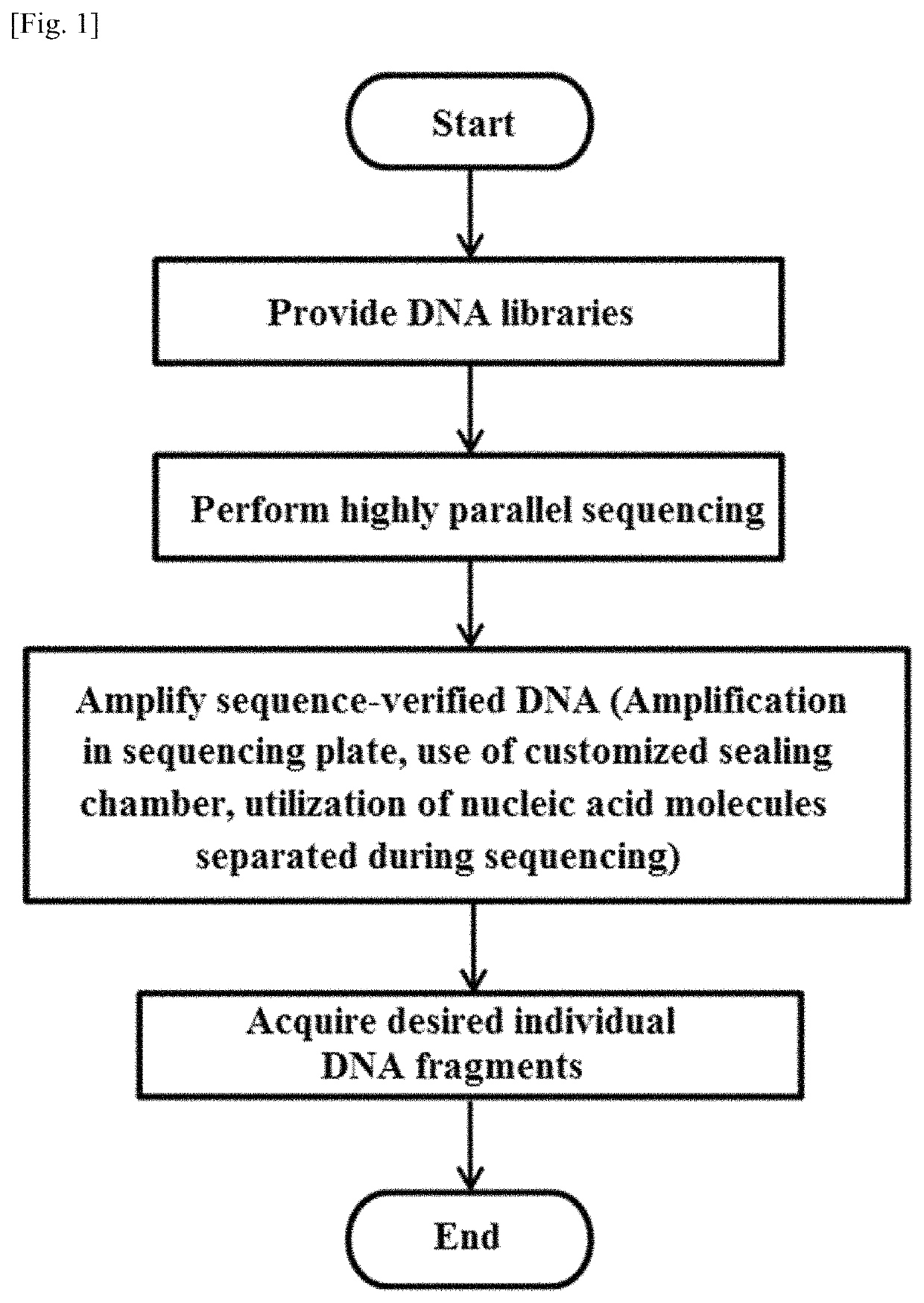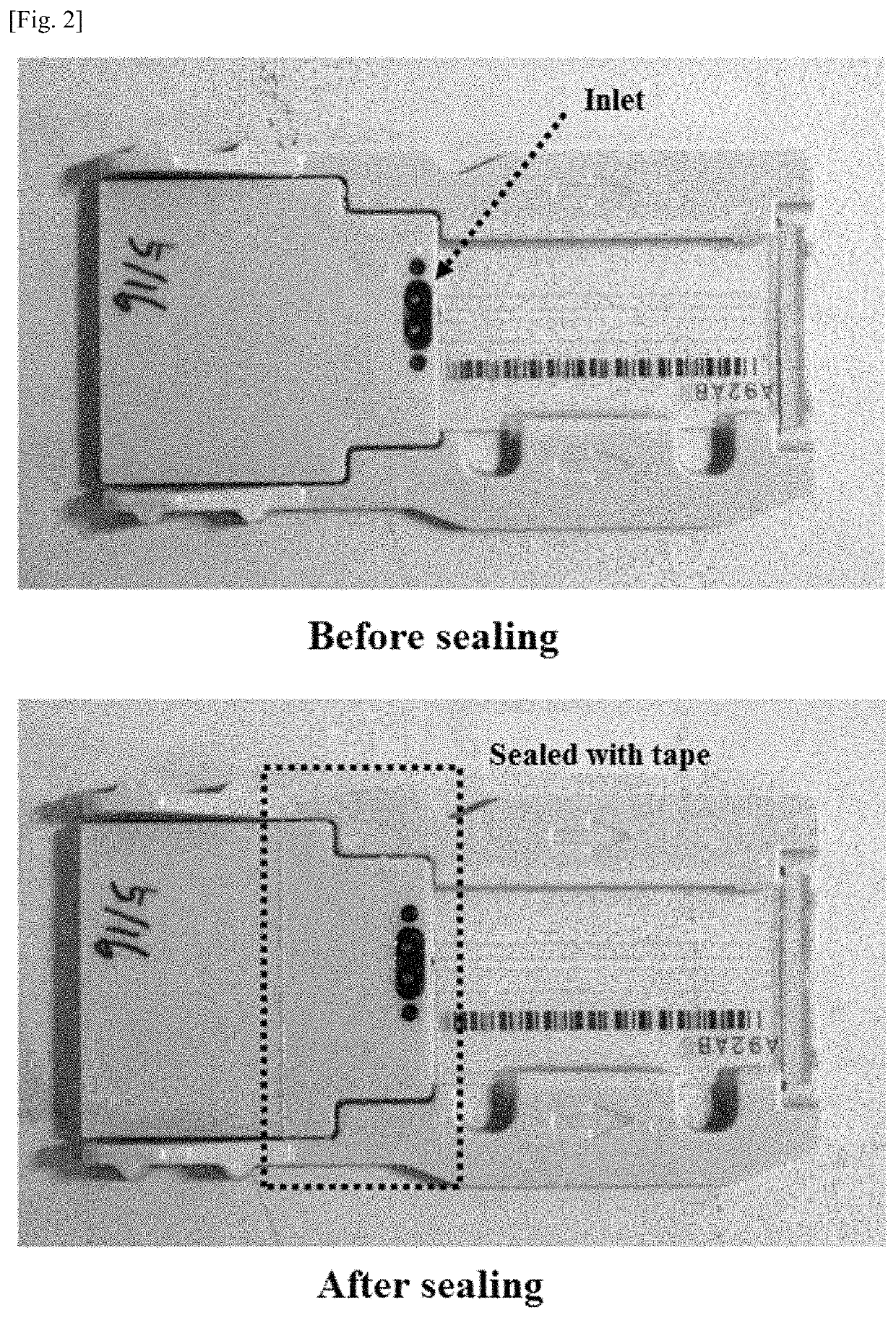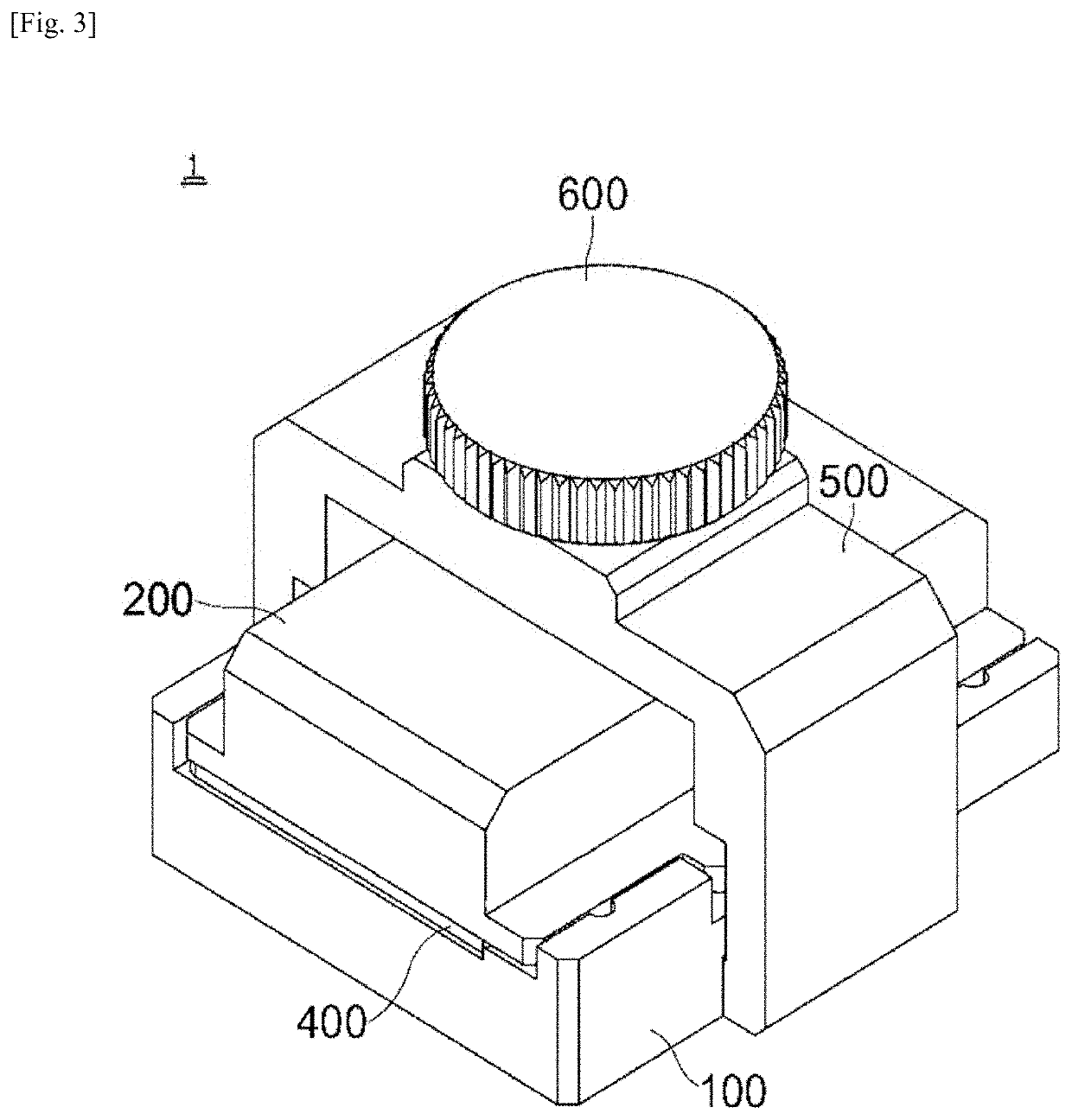Methods for retrieving sequence-verified nucleic acid fragments and apparatuses for amplifying sequence verified nucleic acid fragments
a nucleic acid fragment and sequence verification technology, applied in the field of sequence verification nucleic acid fragment retrieval and apparatuses, can solve the problems of labor-intensive cloning and sanger sequencing procedures, large dna libraries, and high cost, so as to increase the retrieval yield of desired nucleic acid fragments, and reduce the complexity of dna libraries
- Summary
- Abstract
- Description
- Claims
- Application Information
AI Technical Summary
Benefits of technology
Problems solved by technology
Method used
Image
Examples
example 1
g of Nucleic Acid Molecules Through 454 Sequencing
[0096]Adaptor sequences proposed in next-generation sequencing assays were attached to acquired DNA libraries before sequencing. PCR assembly or ligation was used to attach the adaptor sequences. 20 bp long barcode sequences were added and their length was controllable.
[0097]The adaptor sequences were attached by PCR assembly. The PCR solution had the following composition: 10 μl of 2× Pfu polymerase master mix, 1 μl of 10 μM adaptor forward primer, 1 μl of 10 μM adaptor reverse primer, and 5 μl of distilled water. The Pfu polymerase master mix was 2× Pfu polymerase premix available from Solgent. Each primer included 454 adaptor sequences, barcode sequences, and sequences complementary to the terminal sequences of the DNA library. The actual sequences of the primers were CCATCTCATCCCTGCGTGTCTCCGACTCAGNNNNNNNNNNNNNNNNNNNNA CGTACGACAGAGTACTCGT (SEQ ID No. 1) for the adaptor forward primer and CCTATCCCCTGTGTGCCTTGGCAGTCTCAGNNNNNNNNNNNNN...
example 2
tion of the Sequence-Verified Nucleic Acid Molecules in 454 Picotilter Plate
[0099]The sequencing plate having undergone 454 sequencing was mounted in the sealing chamber manufactured in Manufacturing Example 1, followed by sealing. Thereafter, a PCR solution was injected into the sealing chamber through the lateral side of the rubber cover exposed to the lateral side of the sealing chamber using a syringe. The PCR solution was composed of a DNA polymerase, dNTPs, a primer including adaptor sequences proposed in next-generation sequencing, and a buffer or its corresponding PCR solution master mix.
[0100]The PCR solution had the following composition: 600 μl of 2× Pfu polymerase master mix, 15 μl of 100 μM primer, and 585 μl of distilled water. After the sealing chamber containing the PCR solution was immersed in a water bath, the nucleic acid fragments were amplified and extended. The Pfu polymerase master mix was 2× Pfu polymerase premix available from Solgent. The primer sequence wa...
example 3
ation of the Nucleic Acid Molecules Amplified in the 454 Picotilter Plate
[0101]After completion of the reaction, the sealing chamber was withdrawn from the water bath, and the amplified and extended nucleic acid fragments, together with the PCR solution, were retrieved through the lateral side of the rubber cover exposed to the lateral side of the sealing chamber using a syringe (see FIG. 8). The retrieved DNA libraries had different features from the DNA libraries before sequencing. That is, the total number of the kinds of the DNA libraries was reduced to the number of reads for next-generation sequencing and the sequences of the DNA libraries were all known.
[0102]After retrieval, the reduced DNA libraries were selectively amplified by the primers attached with the barcode sequences. The results are shown in FIG. 9. The randomly selected barcode sequences were verified by next-generation sequencing. The results indicate that the randomly selected barcode sequences were verified by...
PUM
| Property | Measurement | Unit |
|---|---|---|
| time | aaaaa | aaaaa |
| time | aaaaa | aaaaa |
| time | aaaaa | aaaaa |
Abstract
Description
Claims
Application Information
 Login to View More
Login to View More - R&D
- Intellectual Property
- Life Sciences
- Materials
- Tech Scout
- Unparalleled Data Quality
- Higher Quality Content
- 60% Fewer Hallucinations
Browse by: Latest US Patents, China's latest patents, Technical Efficacy Thesaurus, Application Domain, Technology Topic, Popular Technical Reports.
© 2025 PatSnap. All rights reserved.Legal|Privacy policy|Modern Slavery Act Transparency Statement|Sitemap|About US| Contact US: help@patsnap.com



